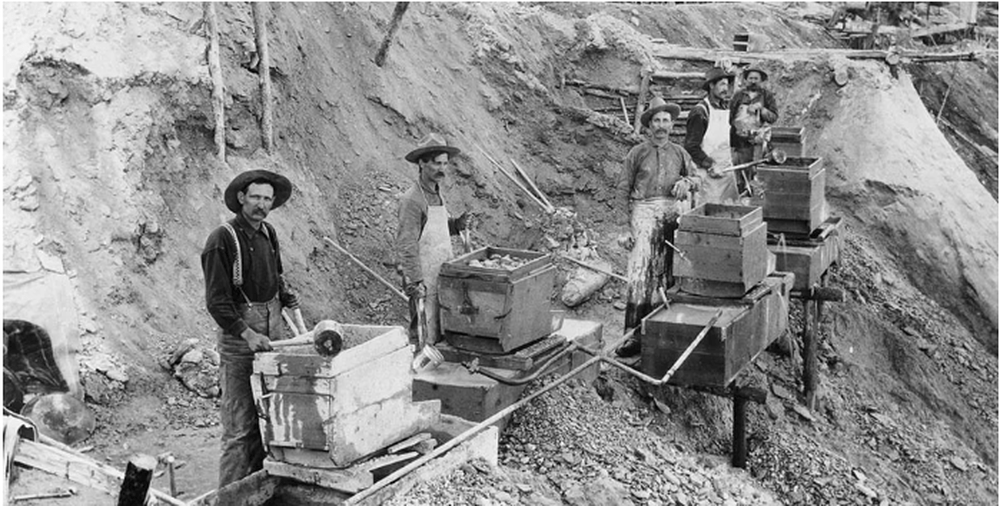When the flood waters recede, the Klondike River in the remote Yukon Territory of Canada reveals a treasure trove of gold. Many tourists who visit the area are lucky enough to change their lives by “harvesting” a significant amount of gold.
The Klondike gold rush began on August 16, 1896, when Skookum Jim Mason, Dawson Charlie, and George Washington Carmack discovered gold in a small tributary of the river. They received a tip about the gold from Robert Henderson, a Canadian gold prospector, and decided to investigate.
To their surprise, they found real gold in the tributary. They quickly established mining rights and divided the area into four separate zones, two for George Washington Carmack and one each for Jim Mason and Dawson Charlie. They registered their claims at the police station at the mouth of the Fortymile River, which attracted many other gold miners to the area.

In late August of the same year, a number of other gold miners also discovered gold in the creeks that flowed into Bonanza. They found multiple deposits of gold along the length of the river, revealing substantial reserves of gold in all sizes, large and small, at the bottom of the Klondike River. Interestingly, after each rainy season, there is an even greater abundance of gold.
Typically, the rainy season washes away rocks and mud to reveal the yellow layer beneath. As a result, many people are attracted to this river to mine gold after each rainy season. Of course, there are also many tourists who come to the area.
Despite the challenging terrain and the fact that it is after the rainy season, gold diggers continue to flock to this location to earn money for food. As a result, many have harvested large batches of gold, changing their lives significantly. Shortly after discovering gold in the riverbed, George Washington Carmack became wealthy, having mined more than 1 million USD in gold according to estimates.

Numerous miners have opted to purchase and trade occupied lands, investing significant amounts of money, and leasing them out. On July 14, 1897, the steamship Excelsior arrived at the port of San Francisco. Any individual possessing golden sand can instantaneously sell it to earn money, with a minimum of 5,000 USD and a maximum of 130,000 USD. Based on current prices, an individual who earns at least 100,000 USD can have it in their pocket.
Towns were constructed around the mining sites, drawing in a large number of tourists and gold miners. Initially, the population at the confluence of the Klondike and Yukon rivers was slightly over 500 people, but after three years, the population had exceeded 30,000 people. A plethora of other services also emerged, including cinemas and pubs.

The peaк was when there were times when the population of these “gold mining towns” reached more than 200,000 people, equivalent To a large Canadian city at that time. Thanкs to that, it is estimated that the value of the mined gold is equivalent To nearly 7 billion USD.
With gold reserves that are probably never exhausTed, to This day there are still more than 200 active gold mines around The river. Thanks to modern machines, experts discovered that in addition to gold, The river bed also contains many other rare minerals. However, to ensure ecological balance, the government only allows gold mining, not other minerals.

See also: The energy crisis forced the German presidenT to… shower faster